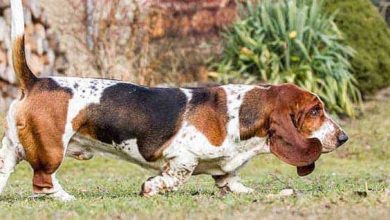Dog Bit Another Dog: Prevention, and Consequences
Dogs are wonderful companions, but unfortunately, incidents of dog aggression can occur. One such instance is when a dog bites another dog. This article explores the topic of dog-on-dog aggression, shedding light on the causes, the consequences of such incidents, prevention strategies, and legal aspects that dog owners should be aware of. By understanding the dynamics of dog aggression, we can work towards a safer environment for our dogs.
Introduction
Dog aggression is a complex issue that can manifest in various forms. It is essential for dog owners and enthusiasts to comprehend the underlying reasons behind these behaviors. By doing so, we can take proactive measures to prevent incidents like one dog biting another.
Understanding Dog Aggression
Types of Aggression in Dogs
Dog aggression can be categorized into different types, each with its own set of characteristics. These include:
- Territorial aggression: Dogs may become protective of their territory and exhibit aggressive behaviors towards other dogs that encroach upon their perceived space.
- Fear aggression: Dogs that experience fear or anxiety in certain situations may resort to aggression as a defense mechanism.
- Dominance aggression: Dogs with a dominant personality may assert their authority by displaying aggressive behaviors towards other dogs.
- Protective aggression: Dogs may show aggression when they feel the need to protect their owners, resources, or even their own puppies.
Causes of Dog Aggression
Several factors contribute to dog aggression. These may include:
- Lack of socialization: Dogs that have not been adequately exposed to different environments, people, and other animals during their early development stages may be more prone to aggression.
- Poor training and discipline: Inconsistent or ineffective training methods can lead to behavioral issues, including aggression.
- Medical conditions: Pain, illness, or certain medical conditions can trigger aggressive behavior in dogs. It is crucial to rule out any underlying health issues through a veterinary examination.
Dog Bite Another Dog Incidents: The Consequences
When one dog bites another, the consequences can be significant for both the victim and the aggressor. Understanding these consequences highlights the importance of taking preventive measures.
Physical Injuries
A dog bite can result in various physical injuries, ranging from minor scratches and puncture wounds to more severe lacerations and fractures. In some cases, these injuries may necessitate immediate veterinary attention or even surgery.
Emotional Trauma
Not only do dog bite incidents cause physical harm, but they can also result in emotional trauma for both dogs involved. The victim dog may develop fear and anxiety, leading to behavioral changes, while the aggressor dog may face legal repercussions or risk being labeled as dangerous.
Prevention and Training
To mitigate dog aggression and reduce the likelihood of one dog biting another, proactive measures need to be taken. The following strategies can be effective in preventing such incidents:
Socialization
Early and positive socialization is crucial for dogs. By exposing them to a variety of environments, people, and other animals from a young age, they learn to navigate social interactions and become more comfortable in different situations.
Obedience Training
Training your dog to respond to commands not only establishes a bond of trust but also helps in controlling their behavior. Basic obedience training, such as teaching commands like “sit,” “stay,” and “leave it,” can go a long way in preventing aggression.
See also: Do Border collie dogs bite
Steps to Take After a Dog Bite Another Dog
In the unfortunate event that a dog bite incident occurs, swift and appropriate action is necessary to ensure the well-being of both dogs involved. The following steps should be taken:
Assess the Situation
Immediately assess the severity of the bite and determine if any immediate medical attention is required. If the injuries are severe, contact a veterinarian or emergency clinic for guidance.
Provide First Aid
If the bite is minor, wash the wound gently with mild soap and water to reduce the risk of infection. Applying an antiseptic ointment and covering the wound with a clean bandage can aid in the healing process.
Seek Veterinary Assistance
Even if the bite appears to be minor, it is crucial to consult a veterinarian. They can evaluate the situation, assess any underlying injuries or health concerns, and provide appropriate medical treatment and advice.
Legal Consequences and Liability
Dog bite incidents often have legal implications, and understanding the associated laws and liabilities is important for dog owners.
Dog Bite Laws
The laws regarding dog bites can vary depending on the jurisdiction. Some regions follow a strict liability rule, holding dog owners responsible for any injuries caused by their pets regardless of the dog’s history. Other areas may have different legal frameworks in place, including “one-bite” rules or negligence-based liability.
Liability of Dog Owners
In many cases, the owner of the dog that bites another dog is held responsible for the resulting damages. It is essential for dog owners to be aware of their legal obligations, including potential compensation for veterinary bills or damages incurred by the victim.
Educating the Public about Dog Bite incidents
Promoting responsible pet ownership and raising awareness about dog aggression are crucial for preventing dog bite incidents in the first place.
Responsible Pet Ownership
Encouraging responsible pet ownership involves educating dog owners about the importance of socialization, training, and regular veterinary care. Emphasizing the need for spaying/neutering, proper containment, and adherence to local leash laws can contribute to a safer community.
Promoting Awareness
Public awareness campaigns, workshops, and community events can help spread knowledge about dog aggression and its prevention. These initiatives can focus on teaching people how to identify signs of aggression, handle encounters with unfamiliar dogs, and report irresponsible dog owners.
Conclusion
Dog-on-dog aggression, such as when one dog bites another, is a concerning issue that can lead to physical injuries, emotional trauma, and legal consequences. By understanding the causes of aggression, implementing preventive measures, and promoting responsible pet ownership, we can create a safer environment for both dogs and their owners.
See also: Why Does My Cat Bite My Legs?
FAQs about Dog Bite Another Dog
Here are the most FAQs you will see related to dog bite another dog:
How common are dog bite incidents?
Dog bite incidents are unfortunately relatively common. According to the Centers for Disease Control and Prevention (CDC), around 4.7 million people in the United States are bitten by dogs each year.
Can aggression in dogs be completely eliminated through training?
While training can significantly reduce aggression in dogs, complete elimination may not always be possible. Some dogs may have underlying genetic or behavioral predispositions that require ongoing management and professional guidance.
What should I do if my dog bites another dog?
If your dog bites another dog, it is important to assess the situation, separate the dogs, and provide any necessary medical attention. Additionally, consult a veterinarian for guidance and consider seeking professional training or behavior modification assistance for your dog.
Are certain dog breeds more prone to aggression?
Aggression is not solely determined by a dog’s breed. While certain breeds may have traits that require responsible ownership and appropriate socialization, individual temperament and upbringing play significant roles in a dog’s behavior.
How can I prevent my dog from becoming aggressive?
Preventing aggression in dogs involves early socialization, proper training, regular exercise, and providing a safe and stimulating environment. Consistency, positive reinforcement, and seeking professional advice, when needed, are key to raising a well-behaved and non-aggressive dog.



